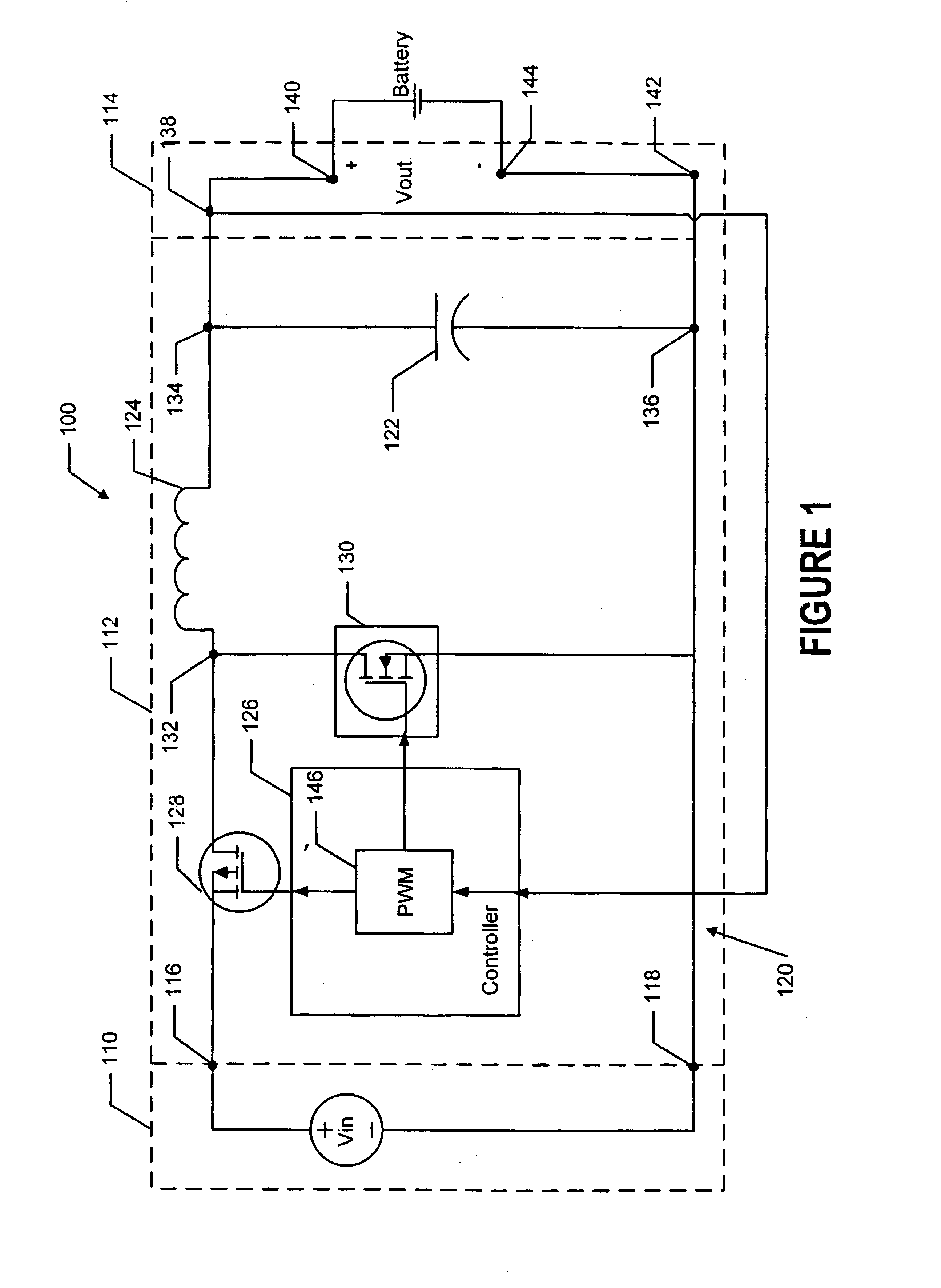Monolithic battery charging device
a charging device and monolithic technology, applied in the direction of electric variable regulation, process and machine control, instruments, etc., can solve the problems of limiting the design and manufacture of monolithic dc--dc converters with large duty ratios, increasing the package size of dc--dc converters, and inacceptable manufacturing costs
- Summary
- Abstract
- Description
- Claims
- Application Information
AI Technical Summary
Benefits of technology
Problems solved by technology
Method used
Image
Examples
Embodiment Construction
In the following detailed description, numerous specific details are set forth in order to provide a thorough understanding of the invention. However, it will be understood that the present invention may be practiced without these specific details. In other instances, well-known methods, procedures, components and circuits have not been described in detail, so as not to obscure the present invention. Further, the presently preferred embodiments disclosed are for exemplary purposes only and other embodiments, such as those disclosed in the concurrently filed non-provisional applications entitled (i) "DC--DC Converter with Resonant Gate Drive," (ii) "DC--DC Converter with Current Control," (iii) Synchronous Switched Boost and Buck Converter," and (iv) "DC--DC Converter with Single Gate Drive," may be employed in lieu of or in combination with of the embodiments disclosed.
1. Exemplary Architecture
FIG. 1 is a schematic diagram of a monolithic battery charger 100. The battery charger 100...
PUM
| Property | Measurement | Unit |
|---|---|---|
| switching frequency | aaaaa | aaaaa |
| switching frequency | aaaaa | aaaaa |
| frequency | aaaaa | aaaaa |
Abstract
Description
Claims
Application Information
 Login to View More
Login to View More - R&D
- Intellectual Property
- Life Sciences
- Materials
- Tech Scout
- Unparalleled Data Quality
- Higher Quality Content
- 60% Fewer Hallucinations
Browse by: Latest US Patents, China's latest patents, Technical Efficacy Thesaurus, Application Domain, Technology Topic, Popular Technical Reports.
© 2025 PatSnap. All rights reserved.Legal|Privacy policy|Modern Slavery Act Transparency Statement|Sitemap|About US| Contact US: help@patsnap.com



